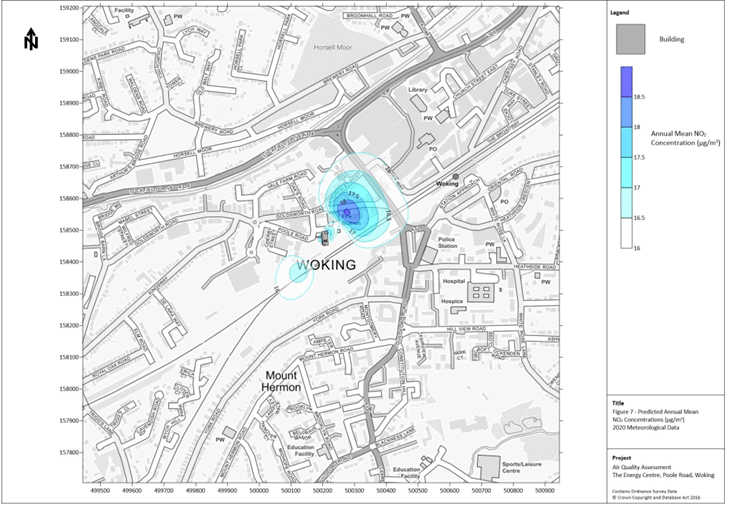Emissions at Poole Road Energy Centre
Poole Road Energy Centre has been designed with the ability to accommodate new and different means of generating energy in response to changing demands for clean energy in Woking town centre over the next 50 years. Hence the energy centre has been designed to be capable of adaptation throughout its lifetime, whilst maintaining uninterrupted supply of energy to customers.
The 29m high flue stack is one of the most striking features of the building. Comprising ten individual flues, in the initial operation of the buildings some of the flues will disperse emissions from natural gas boilers only (just like a domestic gas boiler but on a larger scale), whilst most of the flues will be un-used ready for future addition of plant.
ThamesWey as operators of the Energy Centre has to comply with regulations on the emissions of flue gases and holds a permit for combustion and flue discharge. The regulations are controlled by the Environment Agency through issuing permits following an in-depth impact assessment of the air quality implications for public health and ecological receptors demonstrating no significant effects on all human and ecological receptors. ThamesWey must meet ongoing obligations in order to maintain its permit, such as a limit for the concentration of emissions that can be released. This requires the emissions to be regularly measured by an independent and accredited specialist.
A map of the predicted effect on air quality, measured as an annual mean concentration of NO2(ϥg/m3), is shown below. This map was produced with an assumption that all generation equipment approved by the permit is being utilised to its maximum expected capacity. In 2022, generators are producing around 5% of this maximum, so the effect on annual mean concentration of NO2 today is likely to be significantly lower.
In the future, the flues at Poole Road could disperse emissions from very different generation plant, as the UK moves away from reliance on natural gas for heat and power. In future generators may use different fuels such as biogas, biomethanol, hydrogen, ammonia, waste products or something else not yet available. We don’t know today what equipment Poole Road Energy Centre will use in 2050. However, we expect combustion to continue to be a regulated activity requiring Environment Agency consent. Robust modelling and analysis of the impacts on the local area will be required, as will ongoing monitoring of emissions by independent specialists. This will ensure the Energy Centre continues to have no significant impact on air quality in the local area.


